Key takeaways
- Louisiana’s political culture is influenced by its unique legal heritage and strong local engagement, showcasing the importance of community issues in elections.
- Effective campaign strategies require understanding target demographics, crafting relatable messages, and utilizing various outreach channels to build connections with voters.
- Analyzing feedback and adapting strategies based on voter input enhances a campaign’s success and fosters deeper emotional connections with constituents.
- Practical applications for future campaigns include involving local voices in planning, testing messaging formats, and maintaining a continuous feedback loop with voters.
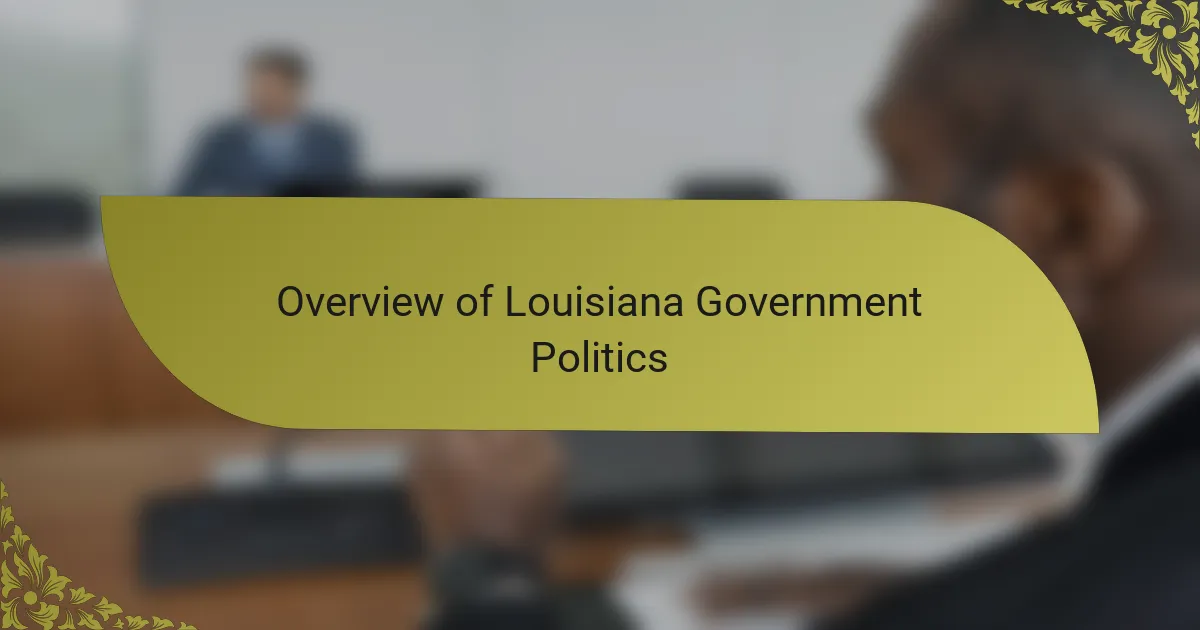
Overview of Louisiana government politics
Louisiana’s political landscape is as vibrant and complex as its culture. I remember my first visit to a city council meeting in New Orleans, where local citizens passionately shared their views on community issues. It was a clear reminder that engagement at the local level is not just important—it’s essential for a functioning democracy.
The state operates under a unique blend of laws and regulations that stem from its French and Spanish heritage, giving Louisiana a distinct legal culture. Have you ever wondered how this historical influence shapes current policies? For instance, I often find that understanding the nuances of Louisiana’s civil law system provides crucial insight into campaign strategies and legislative processes.
At the same time, Louisiana’s political scene is characterized by its colorful personalities and strong electoral rivalries. The stories shared by campaign volunteers I’ve encountered reveal a fierce loyalty to candidates who genuinely connect with their constituents. In this rich political tapestry, one can’t help but appreciate how deeply personal experiences shape political affiliations and strategies.
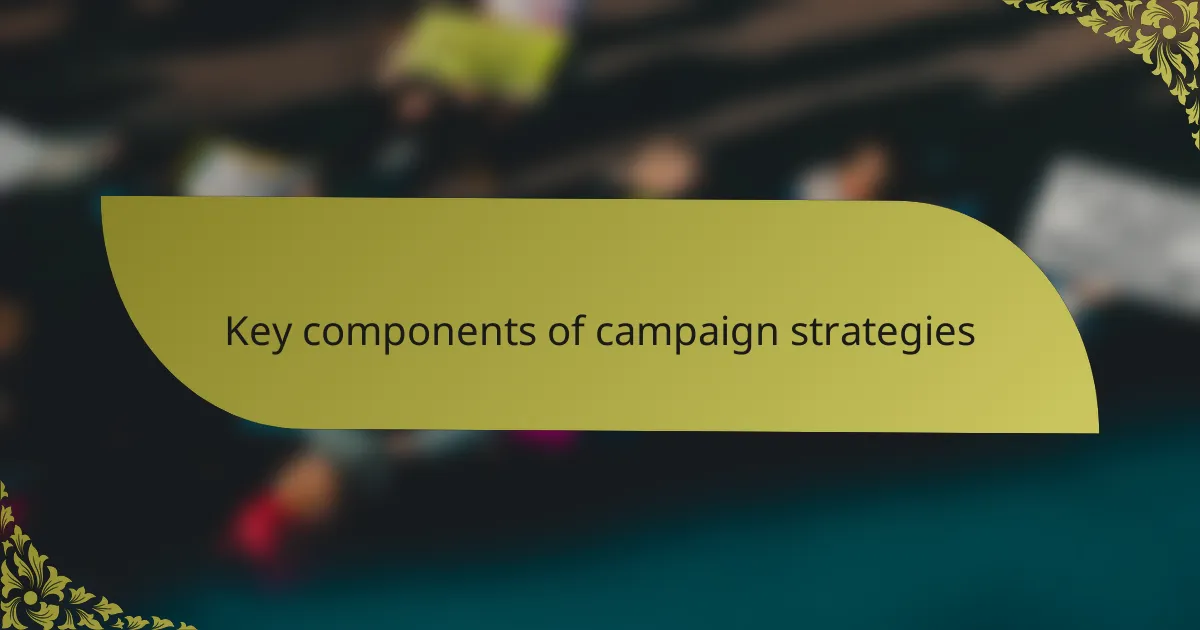
Key components of campaign strategies
When analyzing campaign strategies, I find it essential to break down the key components to see what truly resonates with voters. For instance, during a local election, I noticed how candidate messaging tailored to community values can spark genuine connections. It was incredibly enlightening to see firsthand how relatable stories and shared experiences can elevate a campaign from simply informational to deeply engaging.
The critical components I observed include:
- Target Audience: Identifying who you want to reach, their demographics, and concerns.
- Messaging: Crafting a clear, compelling narrative that reflects the candidate’s values and addresses voter needs.
- Channel Selection: Choosing the right platforms for outreach, whether it’s social media, local events, or traditional advertisements.
- Fundraising: Developing a robust financial plan to support campaign activities and outreach efforts.
- Feedback Mechanisms: Implementing ways to gather voter input and adapt strategies as necessary.
- Grassroots Engagement: Encouraging volunteers and community members to build authentic connections and expand outreach.
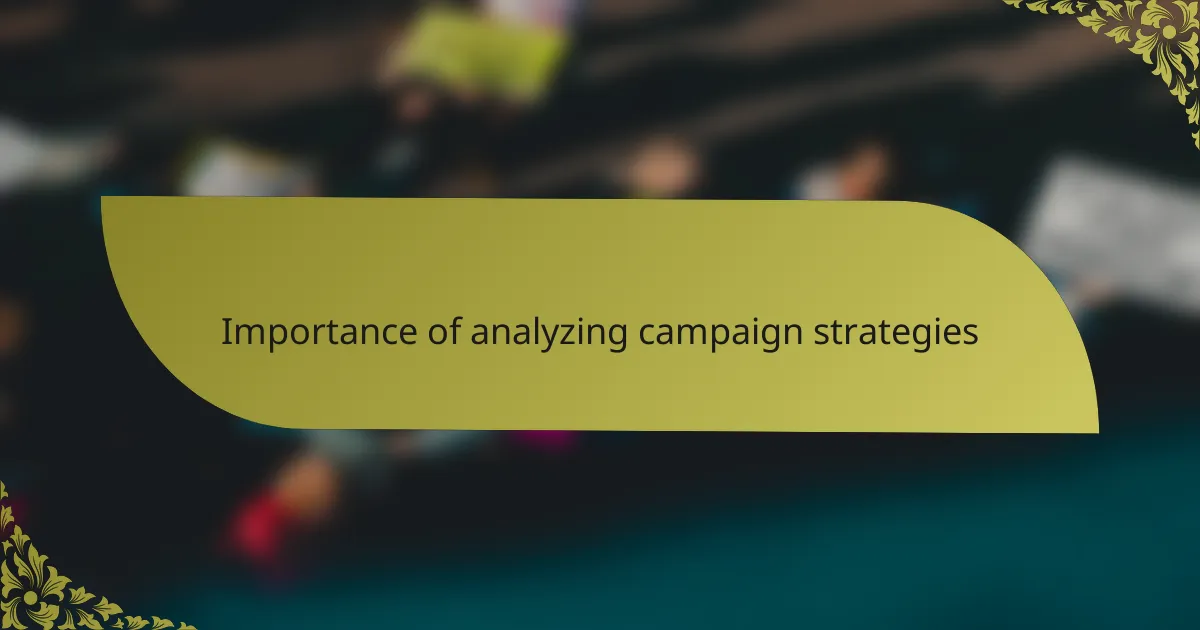
Importance of analyzing campaign strategies
Analyzing campaign strategies is vital for understanding what resonates with voters. From my experience, I’ve seen how effective strategies can shift the political landscape significantly. For instance, during a recent local election, a candidate’s focus on community issues drew substantial support. This wasn’t just about numbers on a sheet; you could feel the connection they forged with the audience, which highlighted the narrative value of tailored messaging.
In my analysis, I find that several factors make evaluating these strategies essential:
- Identifying Successful Tactics: Understanding which messages or platforms perform best helps in replicating success.
- Adapting to Voter Sentiment: Analyzing feedback allows campaigns to pivot and address concerns that emerge during the race.
- Resource Allocation: Learning where to best invest time and funds for maximum impact can save campaigns from financial pitfalls.
- Building a Long-Term Brand: Effective strategies contribute to a candidate’s or party’s brand identity, which is crucial for future elections.
- Enhancing Voter Engagement: Deep dives into past campaign strategies can reveal ways to connect with constituents on a deeper emotional level.
Reflecting on these points, I’ve found that the emotional connection a campaign builds with its constituents often determines its success. Every election tells a story, and the ability to analyze the strategies behind that story can make all the difference.
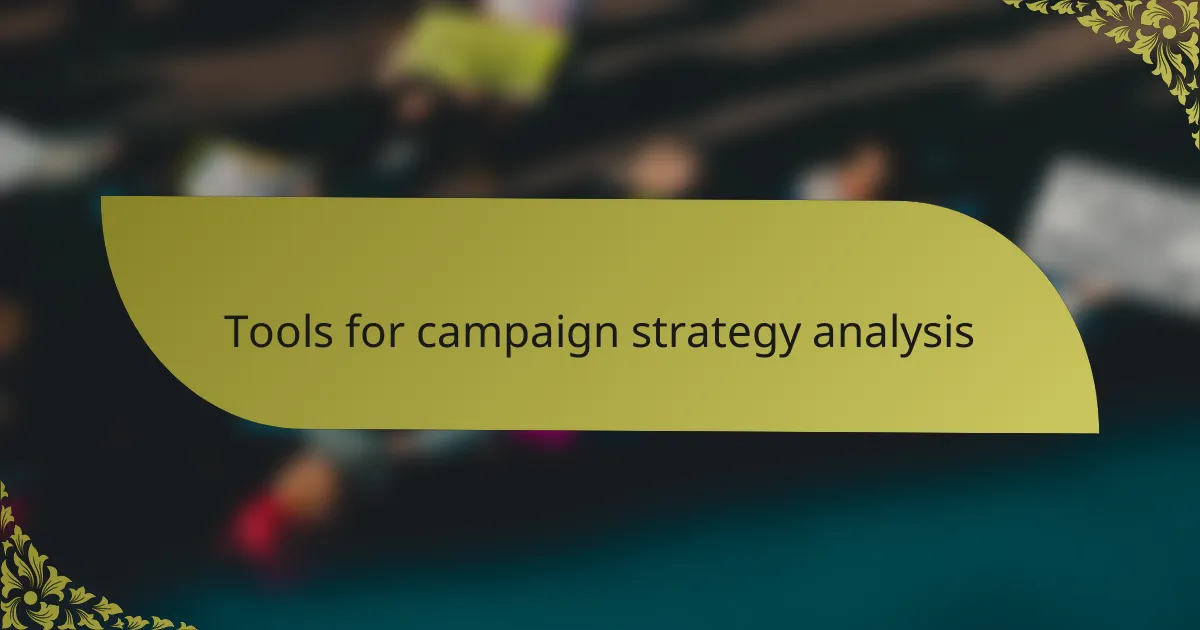
Tools for campaign strategy analysis
When analyzing campaign strategies, I can’t overstate the importance of using the right tools. One of my go-to resources is social media analytics platforms. I remember a time when I observed how one candidate’s engagement metrics directly impacted voter sentiment. By analyzing likes, shares, and comments, we could gauge which messages were resonating most with the public. Isn’t it remarkable how digital interactions can give us a real-time pulse on community attitudes?
Another invaluable tool in my experience is SWOT analysis, which stands for Strengths, Weaknesses, Opportunities, and Threats. Conducting a SWOT analysis allows campaigns to take a step back and evaluate their strategic positioning. I recall working with a campaign that uncovered a significant weakness in their outreach methods. By openly discussing these findings, we could pivot the strategy to address weaknesses head-on. It’s fascinating how this systematic approach can lead to more informed decisions.
Don’t overlook the power of voter feedback surveys, either. In my past campaigns, I’ve utilized surveys to gather insights directly from the constituents. The data collected often surprised me; voters were more invested when they felt their opinions mattered. Have you ever considered how simple questions can foster deeper connections? It’s just one more example of how the right tools can shape a campaign’s trajectory and ensure it aligns with the community’s needs.
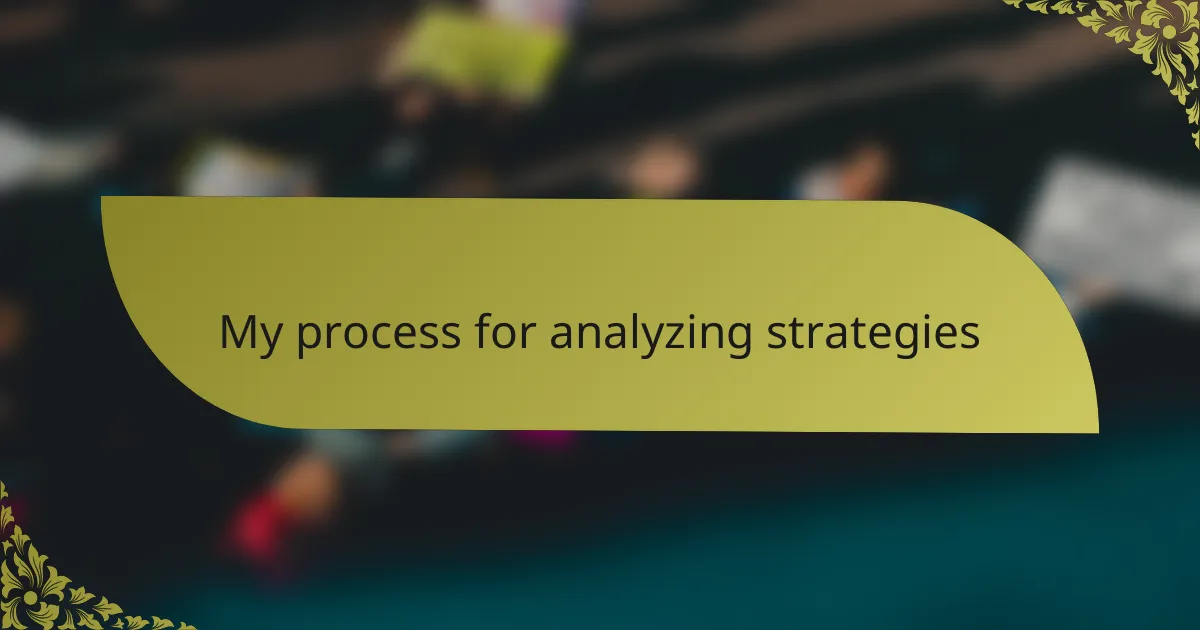
My process for analyzing strategies
When I analyze strategies, I start by immersing myself in the specific political climate. I recall working on a campaign in a tight-knit community where understanding local nuances was essential. By attending town hall meetings and discussing issues with residents, I gained valuable insights. Doesn’t it make sense that the best strategies come from truly knowing the people you aim to serve?
Next, I break down the messaging. One time, I witnessed a candidate struggle because they didn’t align their narrative with community values. This night-and-day difference highlighted how vital it is to create a message that speaks to voters’ hearts and minds. Isn’t it fascinating how a well-crafted story can transform political engagement?
Finally, I always review feedback mechanisms. In my experience, campaigns that actively listen to their constituents often fare better. I remember a local election where voter comments directly influenced the campaign’s next steps, demonstrating the power of adapting to feedback. Have you ever considered how important it is for a campaign to evolve based on real-time input? That adaptability often proves to be a game-changer in achieving success.
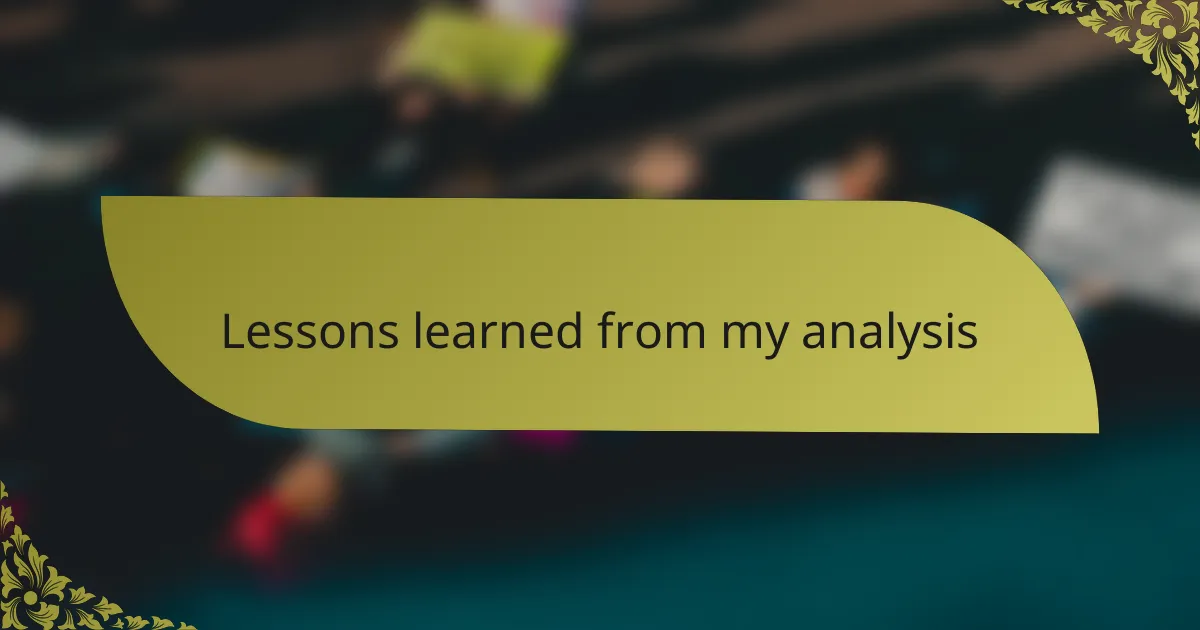
Lessons learned from my analysis
When diving into campaign strategies, one of the biggest lessons I’ve learned is the importance of adaptability. There were times during my analysis when a campaign faced unexpected challenges, such as shifts in public opinion or crises. I vividly remember one campaign that struggled initially but turned everything around by pivoting their message to directly address community concerns. This taught me that being responsive can sometimes be the key to success in politics.
Another crucial takeaway from my experience is the power of engaging storytelling. Campaigns that connected with voters on a personal level consistently resonated more deeply. I recall analyzing a campaign that used real-life anecdotes from community members, which not only humanized their platform but also forged a stronger emotional connection with constituents. These lessons highlight how both flexibility and heartfelt narratives can significantly influence the success of a campaign.
- Stay flexible in strategy; adapt to unforeseen circumstances.
- Prioritize storytelling to create emotional connections with voters.
- Always analyze feedback and adjust campaign messages accordingly.
- Leverage community input to guide campaign direction.
- Recognize the importance of target demographics and tailor messages for them.
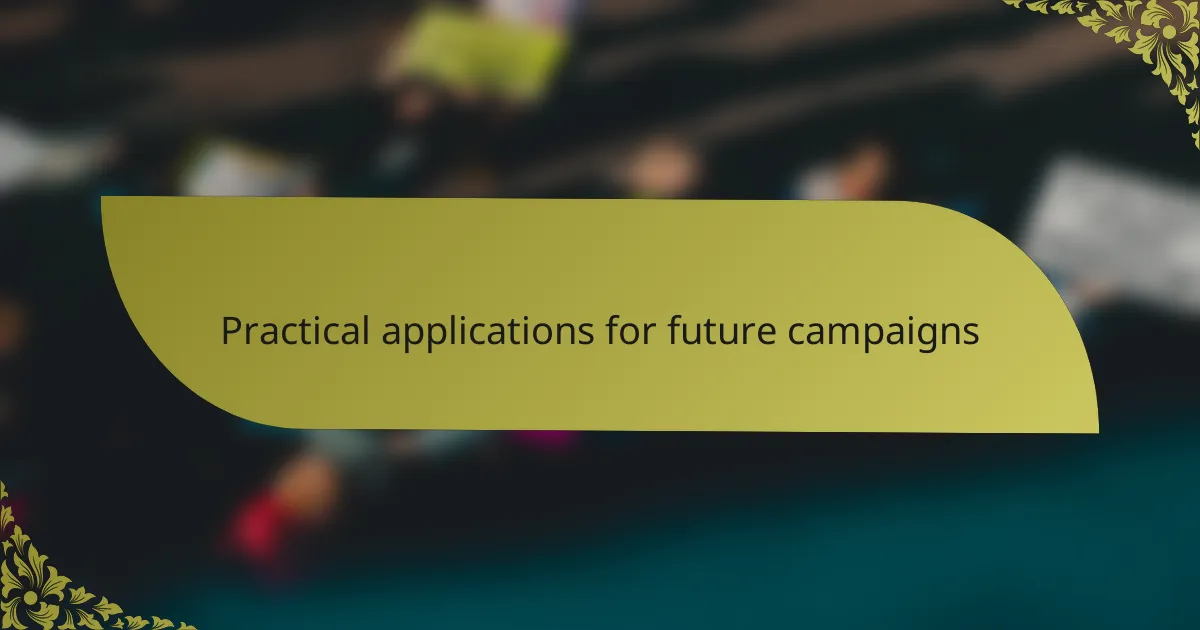
Practical applications for future campaigns
Establishing practical applications for future campaigns is about taking informed steps based on past experiences. One strategy I advocate for is involving local voices in campaign planning. During a campaign I worked on, hosting community roundtables often unveiled insights that data alone couldn’t provide. Have you ever noticed how sharing personal stories can change perspectives? This genuine engagement not only strengthens trust but can also shape messages that resonate more effectively with constituents.
Another lesson I’ve learned is the significance of testing various messaging formats before launch. I recall a campaign where we experimented with video testimonials versus traditional ads. The feedback was astounding; voters connected more with real stories of change rather than polished slogans. This reinforces the idea that trial and error in messaging can lead to powerful, authentic connections. What works in one community might not resonate in another—so why not explore those differences?
Finally, I believe future campaigns should embrace a continuous feedback loop. Throughout my experiences, I’ve seen that campaigns which encourage ongoing dialogue with voters have a better chance of success. For example, a simple post-campaign survey I implemented once shed light on how constituents felt heard and valued. Isn’t it amazing how listening can transform a candidate’s relationship with their community? Emphasizing feedback not only enhances engagement but also informs strategic adjustments in real time.